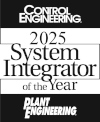
Cassy Gardner, Director of Operations at E Tech Group, recently presented “How to Get the Most Out of Your FEED Study” in an exclusive webinar. She provided a high-level overview of what a FEED study entails, explained the reasons for conducting one, and discussed various examples and challenges.
What is a FEED Study?
A front-end engineering design (FEED) study is essentially the initial planning phase of a project and provides a strong foundation that can streamline the success of an automation project. In a FEED study, the scope of the project is defined at a high level and risks are identified with mitigation tactics. Deliverables for a FEED study include cataloging stakeholders, a decision matrix, a decision log, and the scope of work.
A FEED study will help you address questions like:
- Which automation platform is right for my facility?
- How do we design flexibility into our system?
- How do I properly budget this project?
- What is the fastest way to get into production?
- How do I address obsolescence at my facility?
FEED studies help you reduce the risks associated with implementing an automation project, whether a control system upgrade or factory automation system build. They reduce the likelihood of reaching the end of the project only to discover that a stakeholder’s needs were not addressed in the scope of work. This helps you avoid scrambling, extending your schedule or paying higher costs to address overlooked requirements.
Open-Ended Challenges within FEED Studies
Asking open-ended questions, such as the ones highlighted above, can be challenging because the answers will depend on many different variables. This leads to a need for intense collaboration and investigation of stakeholders during the design process. This could include, but is not limited to the Automation Department, Plant Floor Operations, Quality, EH&S, IT, MSAT, and many others.
Meet the Host!

Cassy Gardner has a successful career in automation engineering, she is currently serving as the Director of Operations for the West Coast team, and has been with E Tech Group since 2013. As the Director of Operations, Cassy has conducted nearly a dozen FEED studies and managed projects exceeding $3 million. In this presentation, Gardner covered what success looks like in a FEED study, the reasons for conducting one, and how to navigate potential challenges.
Another challenge may be in getting stakeholder engagement and buy-in. To properly address open-ended questions around preliminary design and planning that could have a significant impact project-wide long term, there must be an open dialogue. This takes serious commitment from stakeholders to be engaged in the process, and also requires skill and consistency on the part of the systems integrator conducting the FEED study.
3 Stages of FEED Study Best Practices
FEED processes come in three major stages:
- Setting up a framework for making decisions: How do you make decisions when all of the different stakeholders are involved? At this stage, you should identify the appropriate stakeholders and work to understand what their needs and desired outcomes are. With this information in hand, you will build evaluation criteria that informs your decisions.
- Evaluate options: Once you have defined how decisions will be made as a team, you need to evaluate the available options using the decision framework.
- Planning based on decisions reached: After determining goals, you need to plan how to execute them.
Following this simple process will streamline the execution of the FEED study.
Choosing The Right Automation Partner for a FEED Study
Another key to success in a FEED study is regular communication and reporting. If you’ve selected a partner to work with you through this process, you need regular communication to stay informed about progress, and they need your input to fully engage in the process.
In addition, you want to make sure that your partner is spending the project budget the way you want it spent. Asking for frequent forecasting is a good way to ensure this. Essentially, you have an agreed-upon timeline that your partner is committed and accountable to. Just because a project is open-ended and a collaborative process does not mean it shouldn’t have a schedule and defined benchmarks.
Finally, you should consider the level of experience your automation partner has with this type of study. An experienced automation and system integration company will provide thorough documentation, be responsive and comfortable in answering your open-ended questions, and help you avoid scope creep by ensuring the FEED study is comprehensive.
FEED Studies Reduce Risk and Costs for Your Automation Projects
In the world of automation, the planning phase of a project will make or break the budget, timeline, experience, and even the efficacy of the final product. The more time and money you invest in this planning process, the greater your confidence will be that the project will stay on time and within budget. Having a trusted automation partner complete your FEED study with you will effectively minimize the risks endemic to automation and control system projects.
For a more in-depth discussion on FEED studies, listen to the full webinar presentation and hear real FEED study examples. If you’re interested in conducting a FEED study for your next automation project, reach out to the E Tech Group team.
Contact Us
"*" indicates required fields
